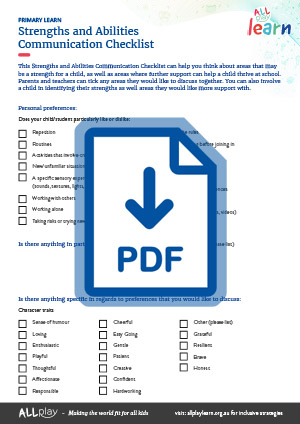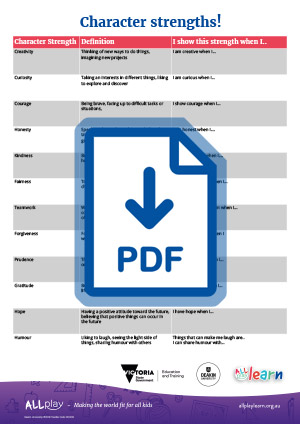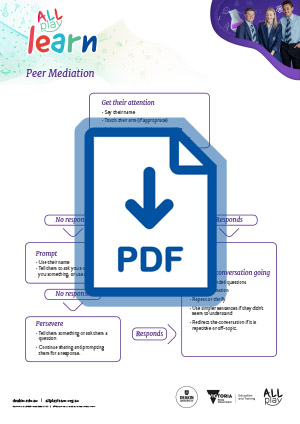
Cerebral Palsy
On this page:

About cerebral palsy
Cerebral palsy describes a group of disorders that affects the way a person moves. Cerebral palsy occurs when there is damage to the brain when it is developing, and it affects a student’s ability to control their muscles. It is the most common form of physical disability in childhood.
A student with cerebral palsy may face challenges with muscle weakness and stiffness. Some students might have trouble with slowness or shakiness, and may not be able to control their movement. Balance, coordination and walking can be also be difficult. Cerebral palsy can affect different parts of the body - some students may have trouble with motor control on one side of their body, some may have challenges with both sides, and some may have challenges that affect only the lower part of their body.
About one third of young people with cerebral palsy also have epilepsy, which means that they have recurring seizures. There are different types of epilepsy and they affect young people in different ways. Some young people will stare blankly or look as if they are daydreaming during a seizure. For some young people, a seizure may involve stiffness or jerking movements. Some young people will benefit from medication, which means that seizures may be rare. If a student in your class has epilepsy, ask the parents and student’s support team about how you can recognise a seizure and what to do.

Strengths
What might be some strengths?
- Students with cerebral palsy have different strengths depending on how they might be affected by the condition.
- Some students with cerebral palsy will have typical language and thinking skills and can learn like any other student (with adjustments to assist with motor challenges).
- Some students with cerebral palsy may be good at managing challenges in their environment so that they can successfully participate.
- Some students with cerebral palsy are able to understand what is expected of them at school and can then manage their own behaviour.
- When given time and opportunities to practise, students with cerebral palsy can develop strong peer relationships and social skills.
Where might you provide support?
- Students with cerebral palsy will differ in how much their movement is impacted. Some students will walk independently, while others will use mobility aids (e.g. a walking frame or a wheelchair). Some students may also have trouble controlling their muscle movements, which can impact their coordination and motor tasks such as writing.
- If muscles in the face, mouth, and throat are impacted by cerebral palsy, students can experience challenges with talking, eating and drinking. They may find speech challenging, which means they might have different ways of communicating (e.g. using computer technology, pictures or gestures with their hands or head), or they might need more time to communicate.
- Students with cerebral palsy may experience chronic or recurring pain. This may affect their behaviour. They may become less motivated to join in or interact with others.
- Students with cerebral palsy may also have difficulties with social interaction and peer relationships.

Evidence-based strategies

Best practice tips
Adjust the rules
Create plenty of space for movement
Allow plenty of time for transitions
Promote independence
Allow more time to learn skills and understand concepts
Consider seating position and duration
Create an inclusive school environment
Promote self-determination
- Create a school culture around acceptance, inclusion and belonging. Social supports and positive attitudes can promote participation. Model positive attitudes and beliefs toward students with disability to your classroom. Consider where peer mediation and group work appropriate. Visit AllPlay Learn's Inclusive Communities for Schools page to access a suite of resources to support you in building an inclusive school culture.
- Promote self-determination. Empower and teach students to make simple choices, set goals, be independent, and develop problem-solving abilities. Use technology as needed. For example, technology can be used by students who communicate non-verbally to indicate preference.

Curriculum considerations

Other considerations
First aid
Safety
Behaviour
Excursions and camps
Assessments
Bullying
Transitions
Other co-occurring conditions

Relevant resources
Visit our resources page for a range of resources that can help to create inclusive education environments for students with disabilities and developmental challenges. Some particularly relevant resources for students with cerebral palsy include:



